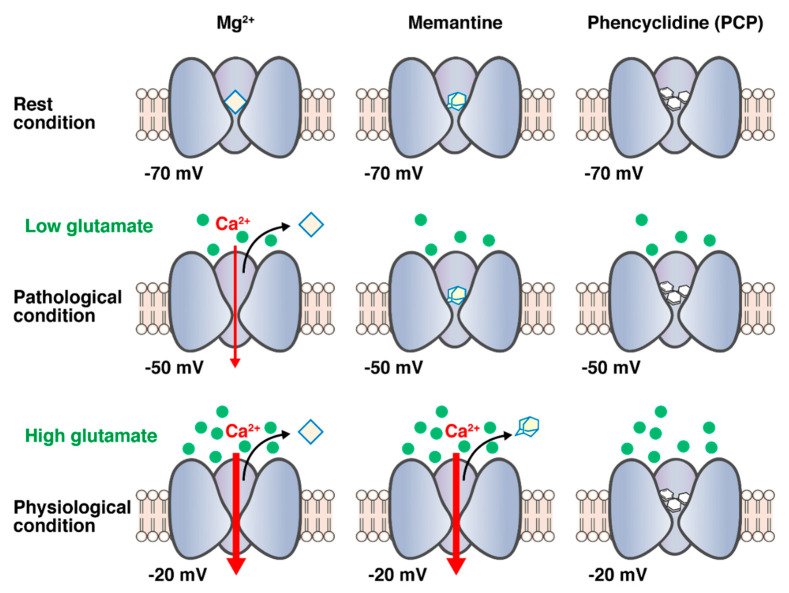Figure 2.
Schema of memantine for the hypothesis of blocking mode based on the combination of fast unblocking kinetics and strong functional voltage dependency. Under physiological conditions, the NMDA receptors are transiently stimulated by millimolar concentrations of glutamate following strong depolarization of the postsynaptic membrane (i.e., −20 mV) that rapidly removes Mg2+ from the binding site of the channel pore to relieve voltage-dependent blockade caused by Mg2+. However, the voltage dependency of Mg2+ is highly prominent so that it easily leaves the NMDA channel, even during moderate depolarization (i.e., −50 mV) under pathological conditions, and NMDA receptors are stimulated by low concentrations of glutamate for a much longer period. Memantine in contrast to PCP and (+)MK-801 seems to rapidly leave the NMDA channel during transient physiological activation by millimolar concentrations of synaptic glutamate, while it blocks the persistent activation by micromolar concentrations under the pathological conditions.

